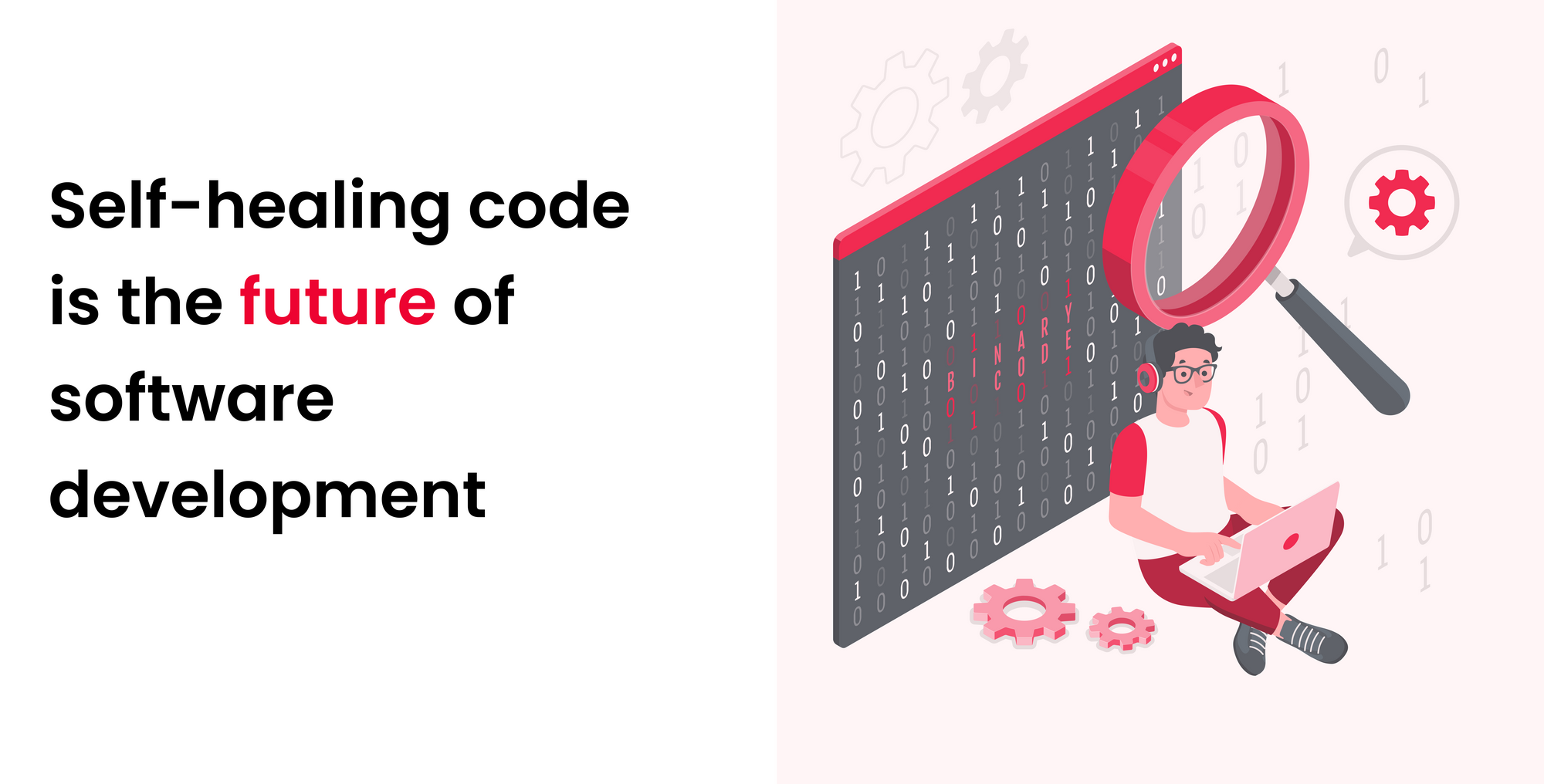Introduction: The world of software development is ever-changing, with new technologies constantly appearing to improve efficiency, dependability, and performance. Among these advancements, self-healing code stands out as a game-changing notion with the potential to alter the industry. This article examines the benefits and drawbacks of self-healing code, emphasizing how it could be a game changer in software development.
What is Self-Healing Code?
Self-healing code refers to software that can automatically detect, diagnose, and fix its own issues without human intervention. This capability is inspired by biological systems, which can repair themselves after injury. In software terms, self-healing can involve correcting bugs, optimizing performance, and maintaining security, all autonomously.
Advantages of Self-Healing Code
Increased Reliability and Uptime
Automatic Bug Fixing: Self-healing code can identify and fix bugs in real-time, reducing downtime and ensuring that applications remain available and reliable.
Proactive Problem Resolution: By constantly monitoring and addressing potential issues before they escalate, self-healing code helps maintain smooth operation and enhances user experience.
Cost Efficiency
Reduced Maintenance Costs: By automating the detection and resolution of issues, self-healing code reduces the need for extensive manual maintenance, cutting costs significantly.
Lowered Operational Expenses: Continuous monitoring and self-repair reduce the need for large support teams and extensive infrastructure to manage software health.
Enhanced Security
Real-Time Threat Mitigation: Self-healing code can identify and neutralize security threats as they occur, providing a robust defense against cyberattacks.
Adaptive Security Protocols: The ability to update and enhance security measures autonomously ensures that software can defend against new and evolving threats.
Improved Development Efficiency
Faster Development Cycles: With self-healing mechanisms in place, developers can focus more on innovation and feature development rather than constant bug fixes and maintenance.
Higher Quality Software: The continuous self-improvement and optimization of code lead to higher quality software products with fewer defects.
Challenges of Implementing Self-Healing Code
Complexity of Implementation
Sophisticated Algorithms Required: Developing self-healing code involves creating advanced algorithms capable of accurately diagnosing and fixing a wide range of issues.
Integration with Existing Systems: Ensuring that self-healing capabilities seamlessly integrate with existing software systems can be challenging.
Performance Overheads
Resource Consumption: Continuous monitoring and self-repair processes can consume significant computational resources, potentially impacting performance.
Balancing Act: Achieving a balance between the benefits of self-healing and the resource overheads is crucial for maintaining optimal performance.
Dependence on Machine Learning
Data Dependency: Effective self-healing mechanisms often rely on large datasets and sophisticated machine learning models, which require ongoing training and updating.
Algorithmic Bias: Ensuring that self-healing algorithms do not develop biases that could lead to erroneous fixes or security vulnerabilities is a key concern.
Security Concerns
Autonomous Decisions: Giving software the ability to autonomously fix itself raises concerns about unintended consequences and the potential for new vulnerabilities.
Trust and Verification: Establishing trust in the autonomous decisions made by self-healing code is critical, necessitating rigorous testing and validation processes.
Conclusion
Self-healing code represents a groundbreaking advancement in the software development industry, offering significant benefits in terms of reliability, cost efficiency, security, and development efficiency. However, the challenges of implementing such systems, including complexity, performance overheads, dependence on machine learning, and security concerns, must be carefully managed. As technology continues to evolve, the potential for self-healing code to become a standard practice in software development grows, promising a future where software systems are more resilient, efficient, and secure. Embracing this innovation could indeed be a game changer, fundamentally transforming how software is developed and maintained.
FAQs on Self-Healing Code in Software Development
What is self-healing code?
Self-healing code is software that can automatically detect, diagnose, and fix its own issues without human intervention, inspired by the self-repair mechanisms in biological systems.
How does self-healing code improve reliability?
It increases reliability by automatically fixing bugs in real-time and proactively resolving potential issues, ensuring continuous and smooth operation.
What are the cost benefits of implementing self-healing code?
It reduces maintenance costs and operational expenses by automating issue detection and resolution, thereby lowering the need for extensive manual maintenance and large support teams.
What challenges are associated with self-healing code?
Challenges include the complexity of implementation, performance overheads due to resource consumption, reliance on machine learning, and potential security concerns with autonomous decision-making.
Can self-healing code enhance software security?
Yes, it can enhance security by identifying and neutralizing threats in real-time and continuously updating security measures to defend against new and evolving threats.



